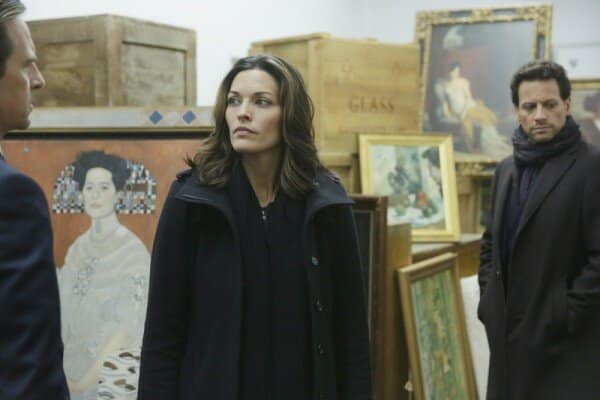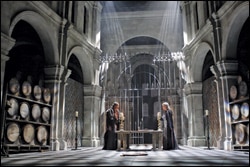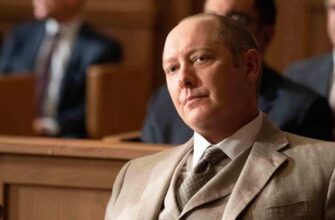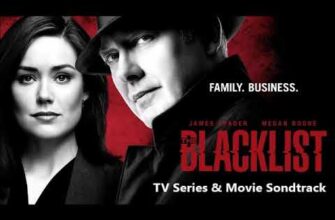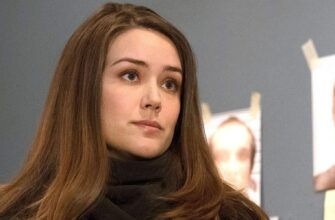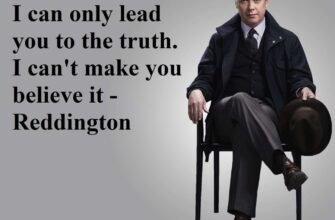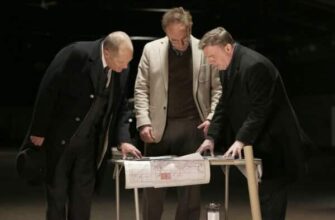Warning: Spoiler Alert
There are very few absolutes in life and the longer we live, the more we accept that nothing’s ever truly back and white, every situation and every human being has their shades of gray, we very rarely in our history, experienced pure evil, or pure goodness. Perhaps that more than anything else was the message expressed, as the ABC freshman series “Forever,” returned to the airwaves after a three-week hiatus. This episode concerned itself more with filling in the blanks of the back-story, putting the murders of the week on a back-burner, concentrating instead on revealing information about the characters, that fans have patiently waited to get revealed.
Some viewers likely felt unfulfilled that NYPD Medical Examiner Henry Morgan, walked out of the morgue near the episode’s conclusion, without giving Detectives Jo Martinez and Mike Hanson anything to go on, concerning an unsolved crime. I’m pretty certain that thread won’t, dangle for long, as Martinez and or Hanson will call Henry on it in the next few episodes. My intuition tells me, that this will start a cycle of events, that Henry can’t answer through the season’s storyline. The reason behind that ongoing complexity’s Morgan’s fellow immortal, the man we know as “Adam.”
I’ve decided to refer to the character that actor Burn Gorman portrays as Adam, rather than Dr. Louis Garber, as the man in this episode only looked the same as the Bellevue Hospital Psychiatrist. Even the English accent had disappeared, as all hints of the genial Garber, the concerned and empathetic doctor, that we met earlier this season vanished.
This episode focused on the Nazi’s march through much of Europe and their stealing of billions of dollars worth of ancient art, from their rightful owners. It’s the seventieth anniversary of the fall of the Third Reich and the Nazi death camps liberation, one of which Auschwitz, Abraham escaped from as an infant rescued by Henry and Abigail. It turns out that, there’s another connection with the concentration camps and revelations for Henry and Abe.
Abraham’s getting examined by a medical tech, for his insurance company renewing his policy, when Henry walks in. The woman says they need a family medical history, starting with his parents and Abe says that his parents died in Poland before he ever knew them. She looks at the tattoo on his arm and apologizes, then says she’s got all she needs and leaves.
Abe appears melancholy and Henry says they can check out the Holocaust Museum, but Abe doesn’t know his birth parents names. Without that he’s stuck in neutral, the phone rings and it’s Jo Martinez, summoning Henry to the scene of a homicide. Morgan enters the apartment and gasps, Martinez says she realizes it’s not pretty, but Henry says it’s gorgeous and heads right for a statue that he identifies as an incredible replica of the Venus of Andolini, the real one stolen from the Louvre.
Jo asks him to look at the body of the victim, instead of the statue and Morgan deduces that the victim an art dealer named Karl Haas, died from a blow to the back of the head with an object so heavy it left an imprint on Haas’ skull, a black-light shows that it’s a Swastika. Henry says that as the Third Reich grew they started marking all their property, he picks up the statue and he see’s the base’s covered with blood and engraved with a Swastika on the bottom, it’s the murder weapon and the actual Andolini.
Hanson and Martinez check on Haas’ background and they find out his father was a Nazi comandante, named Otto Heidrich and was the head of a task-force of SS troops who stole art treasures for Hitler during World War II. He changed his name came to the States with 100 works of art, died in 1980 and willed it all to Karl. Mike says that they’re both grave-robbers and got what they deserved. We find out eight pictures got stolen, seven, ripped from their frames, but one intact, that hung on a wall across the room.
Jo and Henry interview Karl’s son Erik and he says he and his father weren’t close and that his father always closed himself in his study or doing business when he was a boy. Martinez asks if she knew how his father acquired his art and the son responds, his grandfather had a small art shop in Germany and fled the Nazis. Henry and Jo quickly inform him, No, his grandfather was a Nazi and gives him the file. Erik says he won’t believe it, his father and grandfather were good men.
Our first flashback of the evening sends us to the Diogenes Club in London, in the year 1812, so it’s our initial time seeing Henry in his first life, other than briefly on the before he got shot. He’s greeted as he enters by an old friend John Chamberlain, who remarks he hasn’t seen Morgan in a while, Henry says his father was ill, but he’s recovered.
Chamberlain introduces Henry to Nathaniel Hawkes, visiting from the West Indies and Hawkes asks if Morgan’s connected to Morgan Shipping. Henry smiles and says it’s his father’s company and Hawkes proceeds to rip Morgan’s family apart for their lack of morals and says Henry’s father’s a slave-trader. Morgan tells Hawkes that he’s not involved in the family business, but his father’s an honorable man. He’d never engage in slave-trading and these men will back me up, but they all remain silent.
Henry goes through Haas’ possessions and says his shoes show signs of being recently at Brighton Beach. He then finds a pocket-watch, a precision time-piece and of course one of the few jewelers who could work on this watch has a shop on Brighton Beach.
Jo and Henry talk to the jeweler, an elderly man who says he doesn’t recognize the picture of Haas. Morgan charms his way in, saying you deal with plenty of faces, but few time-pieces like this and the man says, Karl’s dead. He gave Haas the watch as a present, for giving back an original Monet, that Heidrich stole from his family. Haas committed his life to reuniting families with the art his father stole. The shop owner then says in German, ” A good man apologizes for the mistakes of the past, a great man corrects them.” He says Karl Haas was a great man.
Back at Abe’s shop, Henry’s telling Abe about the case, when Jo calls and says the blood from the broken window in Haas’ apartment, didn’t show up in the criminal data base, but showed up in the Artistic Registry Network. The problem’s the match comes up with an artist named Max Brenner, dead for 20-years, but Henry says look for his son. Hanson and Martinez track down, Sam Brenner, who’s cutting up what looks like a deer while the blood splatters all over his canvasses and he calls it art.
Jo picks up a painting unlike all the others and Brenner claims he painted it, but Martinez shows him the Nazi marking and the two detectives take him downtown. Brenner admits to stealing the painting, but says Haas was on the phone arguing with another man in German while he stole it. The only word he understood was Rembrandt. Henry tells Jo that he believes Brenner, then he shows Martinez masterpiece, believed gone for good. Brenner created it in 1939 and entitled it Angel Of Death, right then Adam walks into Abe’s shop.
Adam’s looking to sell a sterling-silver tray, said to date back to 18th century England, Abe says he knows an expert of the period and if he leaves it with him he can give him a price. Adam says he’s only going to be in New York for a couple of days for business, but gives him a card and tells Abe to have his friend call him. As he’s giving Abe the card he notices the tattoo and says you were in Auschwitz. Abe tells him he’s correct, how did he know which camp? Adam tells him that certain camps had a symbol with the number, Auschwitz used a triangle and given that it’s under the number he was there in 1945. Abe’s taken aback and tells Adam he’s quite knowledgeable, he responds he’s somewhat of an expert.
Martinez and Morgan head to a Swiss Bank branch and speak with a man who’s a bank official named Julian Glausser, who was the man arguing with Haas on the phone, when Brenner stole his father’s painting. He says they discussed an auction, that Brenner wanted sooner. Henry’s confused and says he thought that Haas tried reuniting the paintings with their owners and Glausser says it’s complicated and takes them to a vault.
The vault’s filled with billions of dollars worth of art, stolen by the Nazis and deposited in the Swiss bank as they remained neutral during the war. They’ve attempted to reunite as many people as possible with their family’s art, but many times, there aren’t surviving relatives.
Which leads to our second flashback of the evening, this time Henry confronting his father and his father saying it’s complicated. Henry starts to walk out, when his father tells him business turned bad three-years before and the entire family estate was on the verge of bankruptcy, so he made some bad decisions. Henry says to his father that he’s always decried slavery, and his father cries he still abhors it. Morgan looks his father in the eyes, tells him he thought he was a good man and walks out.
Back in the present, Henry examines a piece of fabric and tells Detective Martinez that depending on how the canvas is treated can help identify the artist. Because of the way the canvass got treated, Morgan identifies it as a Rembrandt and says Glausser scratched his hands due to poison-oak. They head to the bank all the art and Glausser are gone.
Mike and Jo are trying to cover all their bases, to stop Glausser from getting all the treasures out of the country. Martinez says the Germans used ships and isn’t Hanson’s brother Anthony, foreman at the docks. Hanson calls his brother cursing out Martinez under his breath.
Henry heads back to the antique shop and asks Abe about the tray and he says a guy brought it in looking to sell and he told him he knew an authority. Morgan says you’ve got to see the family crest first, then his jaw drops when he realizes it’s the Morgan family crest. He asks Abe who the man was and what he looked like and Abe said an average guy, but he wore a tweed cabdriver cap, confirming Henry’s fears that Adam had been there. Abe then gives Henry the business card.
Henry meets Adam in a cemetery and he apologizes for his introduction, he really treated Henry badly and wanted to make amends. He said that tray wasn’t easy to find and he said he wanted to meet Abe, Henry says if you hurt Abe in any way, then stops as Adam smiles, realizing threats were meaningless. He then tells Morgan just as Adam and Henry have something in common, he has something in common with Abe as well, he found out Abe was in Auschwitz.
Morgan says he could have guessed Adam was a Nazi, but Adam tells him it was just the opposite. He was the prize project of Hitler’s head butcher, Dr. Josef Mengele, who experimented and tortured him endlessly, finding no key to immortality. He said he could never harm Abe and Henry apologizes for his suffering at Nazi hands. Adam says that since Henry’s on the case he’s looking for a knife they stole from him, from 44 BC. If Henry finds him let him know, he might have something in return. Morgan spits out there’s nothing he’d want from Adam, who responds, you’d be surprised.
Down at the dock Mike’s brother Anthony says he’ll help out the detectives if they make his parking tickets disappear and Hanson apologizes for sleeping with his prom date. Both granted, Hanson’s brother asks where they’d like to start and Jo says, how about the one that’s bleeding on me, on a crane above them. The crane lowered, the packing container’s opened, containing all the treasures and Glausser’s corpse, sliced from head to toe.
Henry believes that the two men were killed by two different people. He says that the murder of Haas was quick, one blow a crime of passion, while whoever killed Glausser, wanted him to suffer and he died a slow and painful death. He then notices that Haas’ eyelids are shut and he once more flashes back to the early 1800’s.
A couple of years passed and Henry’s father on his deathbed, calls for his son and Morgan arrives. His father’s thankful his son had yet to sail for America. Henry says that he sails in three-weeks and he’ll send for Nora, his first wife, when he’s settled. Morgan’s father says he has something to give him and Henry says he can’t accept, but his father gives him the Morgan family watch that had been handed down for generations. He then says that he’s made his share of mistakes, but attempted to learn by them. However, he did one thing right he raised a good man. Henry starts to respond, when he realizes his father’s passed and he closes his father’s eyes.
Morgan dusts the corpse for fingerprints on the eyelids and finds Erik’s prints. Erik admits to killing his father in anger as he gave a stranger a Monet, while Erik couldn’t pay his rent. However he says he didn’t kill Glausser, Glausser was selling the paintings for him.
A skin fragment got embedded in Glausser’s ring and Lucas runs a test and Henry asks if there are any matches, Lucas says not unless the perp had Bubonic Plague. He then says the skin sample tested positive for diseases, that hadn’t existed in centuries, as if the murderer was, Henry interrupts him and says two thousand years old.
Jo and Mike talk about Haas killing his father and Martinez asks about DNA results and Henry says they were inconclusive. Hanson asks about theories and Henry says he’s stumped and leaves the morgue, heading home.
Adam sells Abe the platter and when Abe goes to get a receipt, Adam leaves a brown paper wrapped package on the counter and leaves. Abe opens it and soon realizes it’s the roster records for Auschwitz. When Henry arrives, Abe says he’s reading about Herman and Reba Weinraub, Morgan asks who they are and Abe says his parents. He shows Henry the log and Henry asks where he got it and Abe told him the man who sold him the tray, he’s an Angel.
Henry informs him, that it’s Adam, but he’d tried making amends, he felt a bond with Abe due to the concentration camps. Henry says, that it’s hard to believe Adam could do something so kind, and Abe says but we learned something, he’s been a victim too.
They head to the Holocaust Museum and Abe asks if there’s information or possessions from his parents and the woman asks him his name and he says Abraham Weinraub. A box is in front of the pair and Abe says he didn’t think he’d be that nervous, he opens the box and it’s his parent’s wedding picture. Abe’s mesmerized and then says, well now we know where I got my good looks from.
The Story Continues, Next Tuesday Night at 10:00 pm on ABC.
